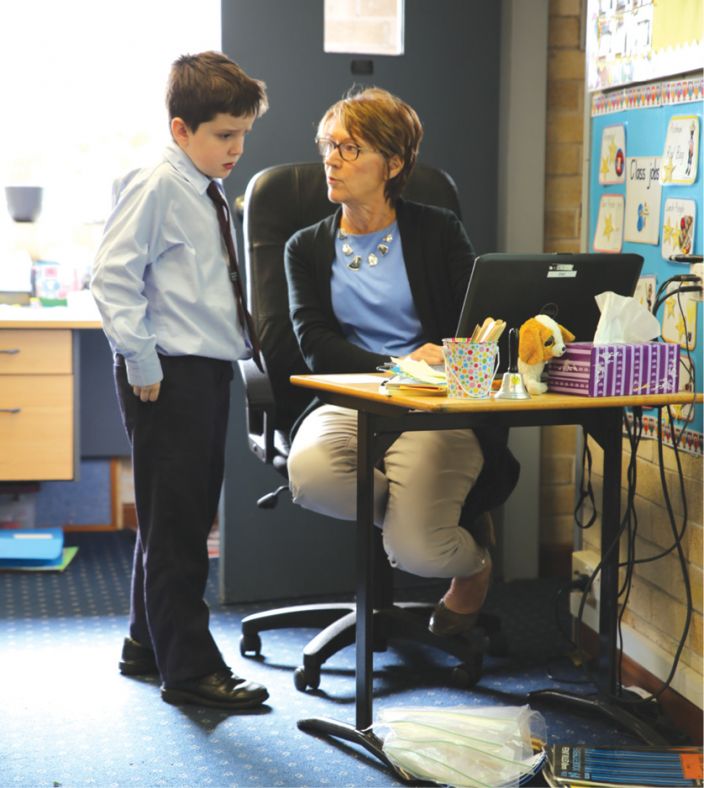St Rose - a professional model
Prioritising wellbeing, with limits on meeting time and a collaborative approach, results in a happy and successful school, St Rose Catholic School Collaroy Plateau Principal Josie Vescio said.


It was appropriate that Newsmonth spoke with IEU members Vescio, Laura Dickson and Monique Santarosa during Wellbeing Week, when the school has no staff meetings and no home learning for students.
Vescio (pictured above centre), an IEU member since 1991 and the school’s principal since 2006, said it was important for school leaders to be mindful of staff workloads.
“It’s important leadership ask staff about their perspective first when wanting them to engage in professional learning,” she said.
The school’s practice is “if you can read it, we don’t have to tell you about it”.
“I respect my staff as professionals and if they can read information in shared documents then we don’t need a face to face meeting.
“We have one to three key input sessions a term on areas we are focusing on.
“Meetings are limited to 45 minutes. If you can’t say what you’ve got to say in 45 minutes, there’s a danger that staff will become overloaded with content.
“We surveyed staff to see when they would most prefer to meet. I trust teachers are working on their professional learning “
Vescio said she used the enterprise agreement as a yardstick when coming up with her meeting plan.
Second year out Year 3 teacher Santarosa (pictured bottom right) said the collaborative approach to teaching at St Rose is living up to the ideals she brought with her when graduated from Australian Catholic University.

“The leadership team asks what works for us. We get to provide feedback on what we are doing, rather than being inundated with information without actually acting on it.”
IEU Rep Dayle Costello (pictured top right) is a part of this collaborative approach, providing feedback to Vescio on the implementation of programs and keeping staff up to date on their rights and responsibilities. Vescio said there are no distinctions between support staff, teachers and leadership at the school, with a distributive leadership style allowing everyone to have a say.
This allows the school to be open to new initiatives such as the inclusion of support staff in the duty roster.
Dickson, REC and Kindergarten teacher (pictured top centre), said extra programs, such as the Extending Maths Understanding (EMU) program are supported by executive members of staff.

“It’s very unusual to see a member of our executive sitting at a desk doing paperwork. They see it as their role to support student learning and spend as much time as possible in the classroom,” Vescio said.
In order to relieve teachers of the burden of compliance, Vescio acts as the gauge so staff don’t have to.
“Rather than staff having to worry about it, I do, which frees them up to explore new teaching experiences for students.
“Across the whole school there is a collective responsibility for student learning. If staff feel valued, they will put their all in.’



































































































































